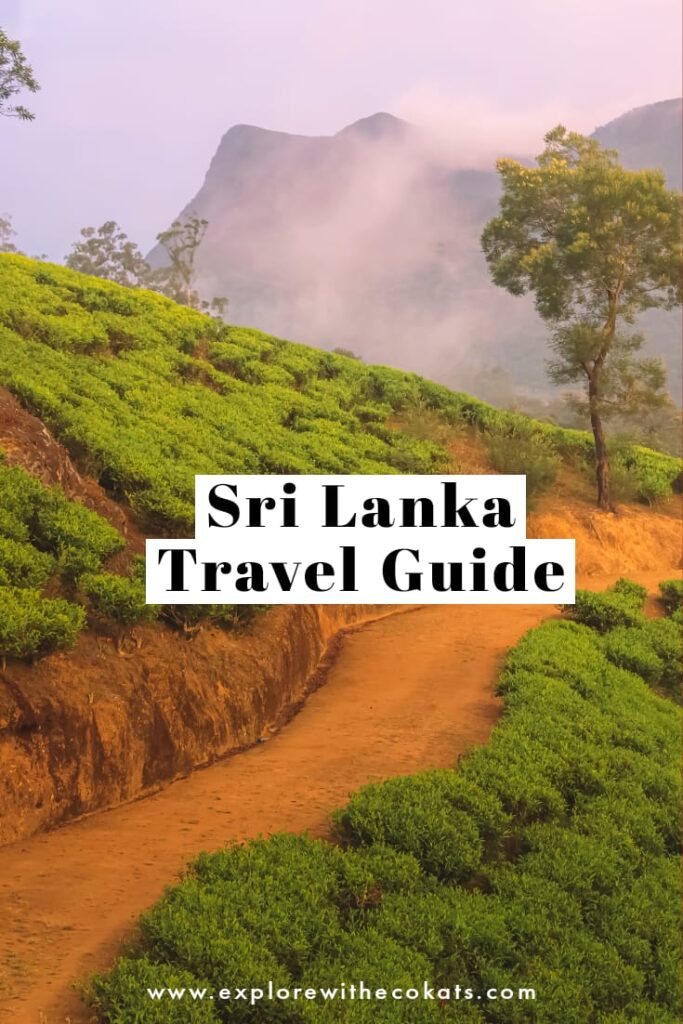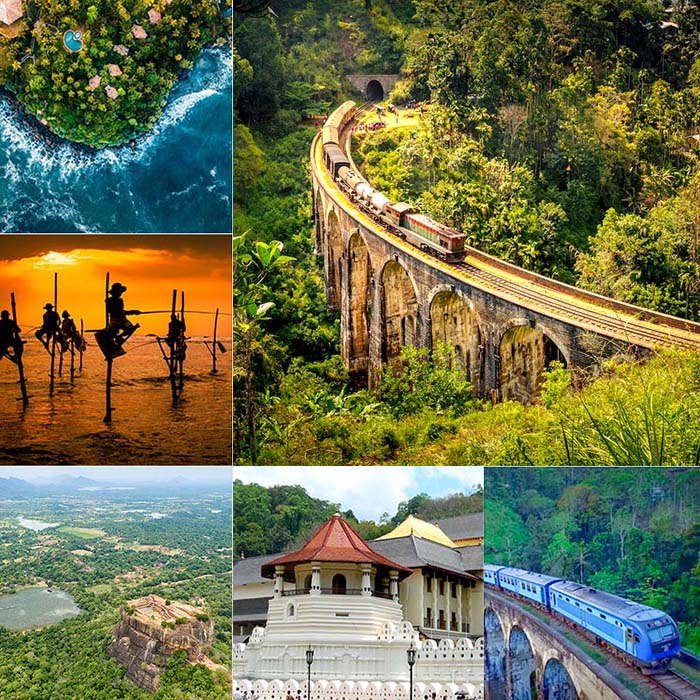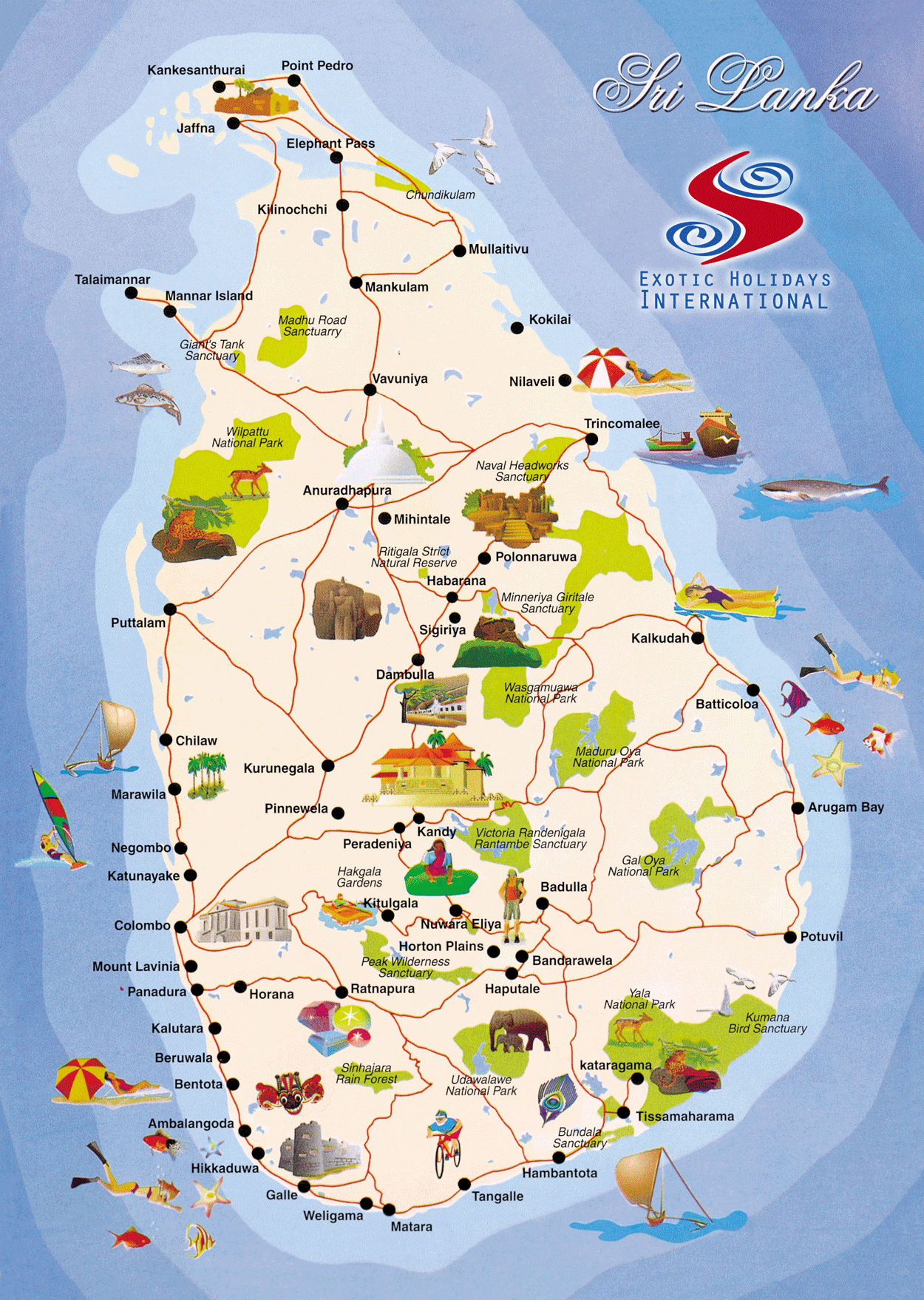
Sri Lanka, a teardrop-shaped island nation off the southeastern coast of India, beckons with a captivating blend of ancient history, breathtaking landscapes, and vibrant culture. From mist-shrouded mountains and lush tea plantations to pristine beaches and ancient ruins, the "Pearl of the Indian Ocean" offers an unforgettable travel experience. This comprehensive guide will equip you with everything you need to plan your dream Sri Lankan adventure, from understanding its rich past to navigating its diverse attractions and practicalities.
A Tapestry of Time: A Glimpse into Sri Lanka’s Rich History
Sri Lanka’s history is as ancient and layered as its iconic Sigiriya rock fortress. For centuries, it was a vital hub on ancient trade routes, attracting traders and conquerors from across the globe.

Related Articles about Sri Lanka: The Pearl of the Indian Ocean – Your Comprehensive Travel Guide:
- Busan: Where Mountains Meet the Sea – A Comprehensive Guide to South Korea’s Coastal Gem
- Argentina: A Tapestry of Wonders – Unveiling the Top Attractions of the Land of Silver
- Hong Kong: A Symphony of Contrasts – Your Ultimate Travel Guide
- Unveiling the Wonders of Oz: Your Ultimate Guide to Australia’s Top Attractions
- Lisbon: The Luminous City of Seven Hills – A Comprehensive Travel Guide
- Ancient Kingdoms: The island boasts a legacy of powerful ancient kingdoms, notably Anuradhapura and Polonnaruwa, which flourished for over a millennium. These cities are now UNESCO World Heritage sites, showcasing magnificent stupas, palaces, and intricate irrigation systems, testaments to their advanced civilizations.
- Colonial Influence: From the 16th century onwards, Sri Lanka experienced periods of colonial rule by the Portuguese, Dutch, and finally, the British. Each left their indelible mark on the island’s architecture, administration, and even cuisine. The British, in particular, are credited with establishing the vast tea plantations that define the hill country.
- Independence and Modern Era: Sri Lanka gained independence from British rule in 1948, initially as Ceylon. In 1972, it became the Republic of Sri Lanka. The nation has navigated its share of challenges, including a prolonged civil war which ended in 2009, and more recently, economic headwinds. However, its resilience and spirit continue to shine through.
Understanding this rich historical context will undoubtedly deepen your appreciation for the ancient sites, colonial architecture, and cultural nuances you encounter during your travels.
Unveiling the Gems: Sri Lanka’s Top Attractions
Sri Lanka’s diversity is its greatest strength, offering something for every traveler. Here are some of its most iconic and beloved destinations:
1. Cultural Triangle: A Journey Through Ancient Wonders

This UNESCO World Heritage region is the heart of Sri Lanka’s ancient history.
- Sigiriya (Lion Rock): This dramatic rock fortress, a UNESCO World Heritage site, is an absolute must-see. Ascend its steep stairs to discover ancient frescoes, the remains of a royal palace, and breathtaking panoramic views from its summit. The sheer scale and engineering prowess are awe-inspiring.
- Polonnaruwa: The second ancient capital of Sri Lanka, Polonnaruwa, offers well-preserved ruins of palaces, temples, and the iconic Gal Vihara, a rock-cut temple with four magnificent Buddha statues. Renting a bicycle is the ideal way to explore this sprawling archaeological park.
- Anuradhapura: The first ancient capital, Anuradhapura, is a vast archaeological site dotted with towering stupas, ancient monasteries, and sacred Bodhi trees. It remains a pilgrimage site for Buddhists and a testament to the island’s spiritual heritage.
- Dambulla Cave Temples: A magnificent complex of five caves housing over 150 Buddha images and intricate murals. The sheer artistry and spiritual aura of this site are captivating.
2. Hill Country: Emerald Slopes and Cool Breezes
The central highlands are a haven of verdant tea plantations, misty mountains, and charming colonial towns.
- Kandy: The last royal capital of Sri Lanka, Kandy is home to the sacred Temple of the Tooth Relic (Sri Dalada Maligawa), a paramount pilgrimage site. The city also boasts a picturesque lake and vibrant markets.
- Nuwara Eliya: Known as "Little England," Nuwara Eliya is a picturesque town with colonial-era architecture, rolling hills, and cool climate. It’s the perfect base for exploring tea estates, hiking in Horton Plains National Park, and visiting the iconic Lover’s Leap waterfall.
- Horton Plains National Park: Home to World’s End, a sheer cliff with a dramatic drop, and Baker’s Falls. The plateau offers stunning trekking opportunities amidst unique montane vegetation.
- Ella: A charming mountain village offering breathtaking views, including the iconic Nine Arch Bridge, Little Adam’s Peak, and Ella Rock. It’s a popular spot for trekkers and backpackers.
3. Southern Coast: Sun, Sand, and Serenity
Sri Lanka’s southern coastline is renowned for its golden beaches, laid-back atmosphere, and abundant marine life.
- Galle: A UNESCO World Heritage city, Galle Fort is a beautifully preserved colonial fortification showcasing Dutch and British architecture. Wander through its charming cobblestone streets, browse boutique shops, and enjoy stunning ocean views.
- Mirissa: A popular beach town known for its vibrant nightlife, delicious seafood, and excellent whale and dolphin watching tours (seasonal).
- Unawatuna: Another beautiful beach with calm waters, perfect for swimming and snorkeling. It offers a good mix of guesthouses, restaurants, and bars.
- Tangalle: Offers more secluded and pristine beaches, ideal for relaxation and escaping the crowds.
4. Wildlife Encounters: A Biodiversity Hotspot
Sri Lanka is a haven for wildlife enthusiasts.
- Yala National Park: The most famous national park, renowned for its high density of leopards, as well as elephants, sloth bears, and numerous bird species.
- Udawalawe National Park: Primarily known for its large elephant population, offering excellent opportunities to see them in their natural habitat.
- Minneriya National Park: Famous for "The Gathering," a spectacular annual event where hundreds of elephants congregate around the Minneriya Tank.
- Sinharaja Forest Reserve: A UNESCO World Heritage site and a biodiversity hotspot, offering a chance to spot endemic species of flora and fauna.
Navigating the Island: Transportation Options
Sri Lanka offers a variety of transportation methods, catering to different budgets and travel styles.
- Trains: The Sri Lankan railway network is extensive and incredibly scenic, particularly the Kandy-Ella route through the hill country. It’s a comfortable and budget-friendly way to travel and experience the country’s landscapes.
- Buses: Buses are the most affordable and widespread mode of transport. They connect virtually every town and village. While they can be crowded and sometimes chaotic, they offer a true local experience.
- Tuk-Tuks (Three-Wheelers): Ubiquitous in towns and cities, tuk-tuks are perfect for short distances. Always agree on the fare before starting your journey or insist on using the meter.
- Private Cars and Taxis: For comfort, convenience, and flexibility, hiring a private car with a driver is a popular option, especially for longer journeys or if you have a specific itinerary. Many drivers also act as unofficial guides.
- Domestic Flights: For longer distances, domestic flights are available between major cities like Colombo, Kandy, and Trincomalee, saving significant travel time.
A Haven for Every Budget: Accommodation Options
Sri Lanka offers a wide spectrum of accommodation to suit every preference and budget.
- Budget Guesthouses and Hostels: Plentiful in tourist areas, offering clean and basic rooms at affordable prices. Many provide a social atmosphere, ideal for solo travelers.
- Mid-Range Hotels: From charming boutique hotels to comfortable chain hotels, you’ll find a good selection offering modern amenities and good value for money.
- Luxury Resorts and Boutique Villas: For those seeking indulgence, Sri Lanka boasts world-class luxury resorts, often situated on the beach or amidst stunning natural settings. Boutique villas offer exclusivity and personalized service.
- Homestays: An excellent way to experience local culture and hospitality, homestays provide an opportunity to interact with Sri Lankan families and enjoy home-cooked meals.
- Eco-Lodges and Glamping: Increasingly popular, these options offer a sustainable and immersive experience in nature, often in unique and beautiful locations.
When to Embark on Your Journey: Best Time to Visit
Sri Lanka’s climate is tropical, with distinct monsoon seasons affecting different parts of the island at different times. This means it’s generally possible to visit year-round, depending on your desired activities.
- December to March: This is considered the peak tourist season, especially for the southern and western coasts. The weather is generally dry and sunny, making it ideal for beach activities and exploring the south. The hill country also experiences pleasant weather.
- April to June: This is a transitional period with warmer temperatures. The southwestern monsoon begins in May, bringing rain to the west and south, though often in short bursts. The east coast starts to experience better weather.
- July to September: This is the peak season for the east coast, including Trincomalee and Arugam Bay, offering dry and sunny conditions for beaches and surfing. The southwest monsoon continues to affect the west and south, with intermittent rain.
- October to November: Another transitional period with the inter-monsoon rains, which can be heavier. This is a good time to visit the Cultural Triangle and hill country as crowds are smaller, and prices may be lower.
Key Considerations:
- Beach Lovers: Aim for December to March for the south and west coasts, and July to September for the east coast.
- Cultural Exploration: The dry seasons (December to March and July to September) are generally ideal, but shoulder seasons can also be rewarding with fewer crowds.
- Wildlife Safaris: While wildlife is present year-round, the dry seasons are often better for spotting animals in national parks as they congregate around water sources. "The Gathering" in Minneriya typically occurs from July to October.
Essential Travel Tips for Sri Lanka
To ensure a smooth and enjoyable trip, keep these tips in mind:
- Visa Requirements: Check the latest visa requirements for your nationality well in advance of your travel. Many nationalities can obtain an Electronic Travel Authorization (ETA) online.
- Currency: The local currency is the Sri Lankan Rupee (LKR). ATMs are widely available in major towns and cities. It’s advisable to carry some cash for smaller purchases and rural areas.
- Language: The official languages are Sinhala and Tamil. English is widely spoken in tourist areas, hotels, and by tour guides.
- Religion and Culture: Sri Lanka is predominantly Buddhist, with significant Hindu, Muslim, and Christian minorities. Dress modestly when visiting religious sites (shoulders and knees covered) and remove your shoes before entering temples.
- Health and Safety: Consult your doctor about recommended vaccinations and malaria precautions. Drink bottled water and be cautious with street food. Sri Lanka is generally a safe country, but it’s always wise to be aware of your surroundings and take standard precautions against petty theft.
- Respect Local Customs: Be mindful of local customs and traditions. Avoid pointing with your feet, and always use your right hand when giving or receiving something.
- Bargaining: Bargaining is common in local markets and with tuk-tuk drivers. Do so respectfully and with a smile.
- Connectivity: SIM cards are readily available at the airport and in towns, offering affordable data plans for staying connected.
- Sun Protection: The sun can be intense. Pack sunscreen, a hat, and sunglasses.
- Insect Repellent: Especially important in forested areas and during evenings to protect against mosquitoes.
Embark on Your Sri Lankan Adventure
Sri Lanka is a destination that will capture your heart and leave you with a treasure trove of memories. Its rich history, diverse landscapes, warm people, and vibrant culture offer an experience unlike any other. By planning your trip with this comprehensive guide, you’ll be well-equipped to discover the magic of the Pearl of the Indian Ocean. So, pack your bags, open your mind, and prepare for an extraordinary journey.





